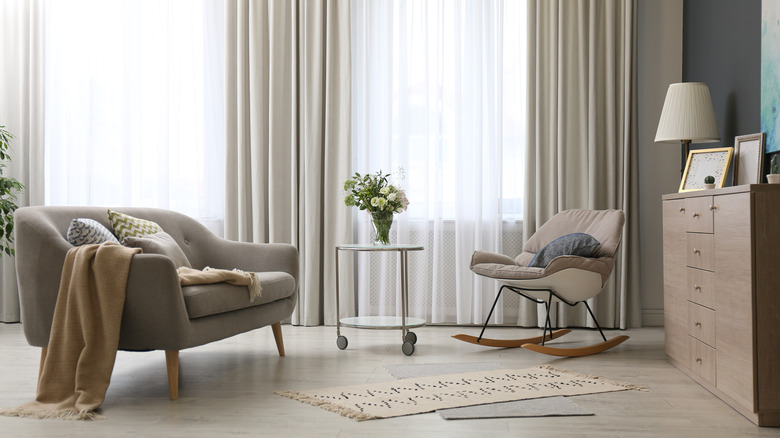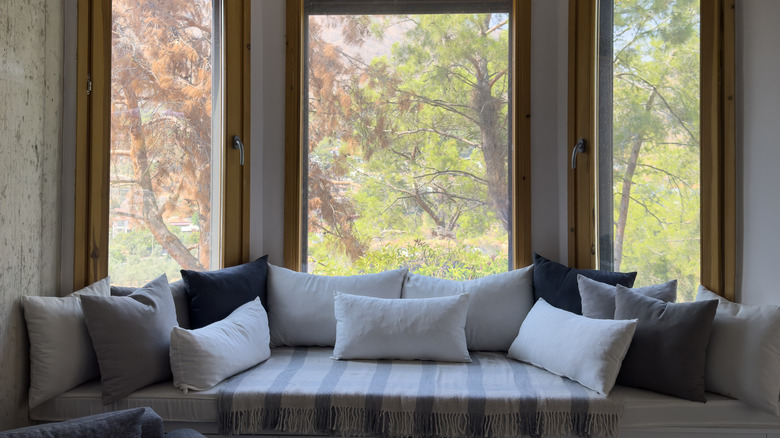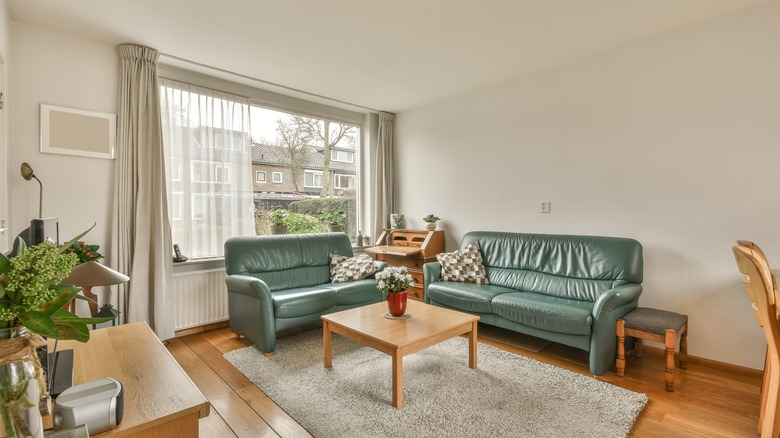The Biggest Mistake You're Making With Your Windows When Arranging A Room
For many homeowners, having a home filled with natural lighting is a must, whether it's with floor-to-ceiling windows, the addition of skylights, or just having more than one window in each room. Windows can brighten up a room and make it more inviting while keeping curious pets busy during the day. Your plants love them, too. But despite all the benefits of having sunlight pouring into your home, you might be making a common mistake involving your windows: blocking them with furniture.
Does this mean you should never place furniture in front of a window? No, but if letting in the sunlight is important to you, it's best to be mindful of the furniture's height, how much natural light pours into a room, and the type of furniture you'll be placing in the room. And if you have no choice but to place a piece of furniture on a specific wall, there are options that allow you to still enjoy some natural lighting in the room.
How to strategically arrange furniture in front of a window
Moving a TV stand with a 65-inch television in front of a window will definitely rob the room of some of the coveted natural lighting, but there are plenty of furniture options that won't. For example, a comfy bench seat with cushions would go nicely in front of a window, especially if it's a bay window. Any other low-back sofa can also be placed in the same location without blocking the sunlight. Additionally, you can always try adding swivel chairs since they're mobile and relatively small.
Tables can be a great furniture option as well. Many tables are short enough to be placed in front of a window without obstructing any portion of it. For example, this can include desks (sans hutches) and potted plants. And if you're fortunate enough to have an abundance of windows in one room or skylights, you should have a lot more flexibility with where you place the furniture.
When placing large furniture in front of a window is unavoidable
While it's great if you can place swivel chairs, low-back benches, and other unobstructive furniture in front of your windows, what if you have no choice but to place something taller there? Like a sofa that doesn't have a low back or a desk that does have a hutch?
It's simple: leave a gap between the furniture and the window if space allows. Just a few inches will do, but if you want to also provide the benefit of being able to walk and/or easily clean behind the furniture, move it about a foot from the wall. Angling the furniture is another option you can choose to allow more natural lighting. Pulling blinds up or keeping the curtains wide open can also help compensate for the window obstruction.
At the end of the day, how you arrange your home is entirely up to you, of course. But, if natural lighting is important to you, it's best to either avoid placing furniture in front of windows or to arrange it there strategically.


